Anal and Perianal Masses: The Common, the Uncommon, and the Rare
- PMID: 39318564
- PMCID: PMC11419757
- DOI: 10.1055/s-0044-1781459
Anal and Perianal Masses: The Common, the Uncommon, and the Rare
Abstract
A variety of tumors involve the anal canal because the anal canal forms the transition between the digestive system and the skin, and this anatomical region is made of a variety of different cells and tissues. Magnetic resonance imaging (MRI) is the modality of choice for diagnosis and local staging of the anal canal and perianal neoplasms. In this pictorial review, we demonstrate the MRI anatomy of the anal canal and perianal region and display the imaging spectrum of tumors in the region along with an overview of its management. Imaging appearances of many tumorlike lesions that can cause diagnostic dilemmas are also demonstrated with pointers to differentiate between them.
Keywords: MRI; anal; cancer; neoplasms; perianal.
Indian Radiological Association. This is an open access article published by Thieme under the terms of the Creative Commons Attribution-NonDerivative-NonCommercial License, permitting copying and reproduction so long as the original work is given appropriate credit. Contents may not be used for commercial purposes, or adapted, remixed, transformed or built upon. ( https://creativecommons.org/licenses/by-nc-nd/4.0/ ).
Conflict of interest statement
Conflict of Interest None declared.
Figures

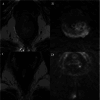
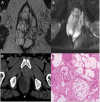
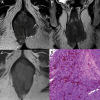
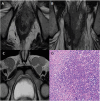
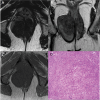

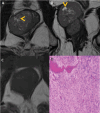
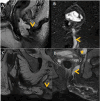
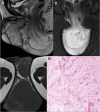
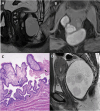

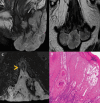

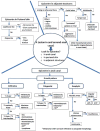
Similar articles
-
Neoplasms of anal canal and perianal skin.Clin Colon Rectal Surg. 2011 Mar;24(1):54-63. doi: 10.1055/s-0031-1272824. Clin Colon Rectal Surg. 2011. PMID: 22379406 Free PMC article.
-
Tumors and Tumorlike Conditions of the Anal Canal and Perianal Region: MR Imaging Findings.Radiographics. 2016 Sep-Oct;36(5):1339-53. doi: 10.1148/rg.2016150209. Radiographics. 2016. PMID: 27618320 Review.
-
Imaging features of Benign Perianal lesions.J Med Imaging Radiat Oncol. 2019 Oct;63(5):617-623. doi: 10.1111/1754-9485.12934. Epub 2019 Aug 1. J Med Imaging Radiat Oncol. 2019. PMID: 31368659 Review.
-
MRI of anal canal: common anal and perianal disorders beyond fistulas: Part 2.Abdom Radiol (NY). 2018 Jun;43(6):1353-1367. doi: 10.1007/s00261-017-1306-1. Abdom Radiol (NY). 2018. PMID: 28871380 Review.
-
Anatomy of the anal canal and perianal structures as defined by phased-array magnetic resonance imaging.Br J Surg. 2001 Nov;88(11):1506-12. doi: 10.1046/j.0007-1323.2001.01919.x. Br J Surg. 2001. PMID: 11683750
References
-
- Siegel R L, Miller K D, Fuchs H E, Jemal A. Cancer statistics, 2022. CA Cancer J Clin. 2022;72(01):7–33. - PubMed
-
- Solan P, Davis B. Anorectal anatomy and imaging techniques. Gastroenterol Clin North Am. 2013;42(04):701–712. - PubMed
-
- Brown G, Daniels I R, Richardson C, Revell P, Peppercorn D, Bourne M. Techniques and trouble-shooting in high spatial resolution thin slice MRI for rectal cancer. Br J Radiol. 2005;78(927):245–251. - PubMed
-
- Chandramohan A et al.MRI staging of anorectal malignancy—a reporting dilemma: is it adenocarcinoma or squamous cell carcinoma? J Gastrointestinal Abdominal Radiol. 2023;6:136–145.
-
- deSouza N M, Williams A D, Gilderdale D J. High-resolution magnetic resonance imaging of the anal sphincter using a dedicated endoanal receiver coil. Eur Radiol. 1999;9(03):436–443. - PubMed
Publication types
LinkOut - more resources
Full Text Sources

